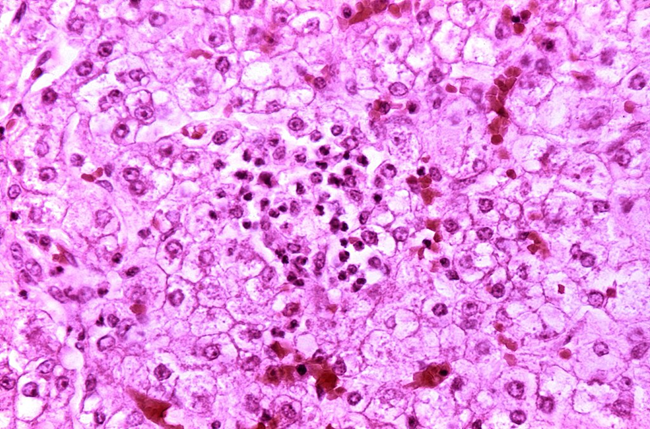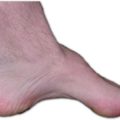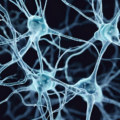What Is Energy?
Energy is an invisible force. The aggregate of energy in any physical system is a constant quantity, transformable in countless ways but never increased or diminished. In the human body, chemical energy is produced by the combination of oxygen with glucose. This reaction is known as oxidation. The chemical energy is transduced to electrical energy in the process of energy conservation. This might be thought of as the “engine” of the brain/body cells. We have to start thinking that it is electrical energy that drives the human body.
The production of chemical energy is exactly the same in principle as the burning of any fuel but the details are quite different. The energy is captured and stored in an electronic form as a substance known as adenosine triphosphate (ATP) that acts as an energy currency. The chemical changes in food substances are induced by a series of enzymes, each of which combine together to form a chain of chemical reactions that might be thought of as preparing food for its ultimate breakdown and oxidation.
Each of these enzymes requires a chemical “friend”, known as a cofactor. One of the most important enzymes, the one that actually enables the oxidation of glucose, requires thiamine and magnesium as its cofactors. Chemical energy cannot be produced without thiamine and magnesium, although it also requires other “colleagues”, since all vitamins are essential. A whole series of essential minerals are also necessary, so it is not too difficult to understand that all these ingredients must be obtained by nutrition. The body cannot make vitamins or essential minerals. There is also some evidence that thiamine may have a part to play in converting chemical energy to electrical energy. Thus, it may be the ultimate defining factor in the energy that drives function. If that is true, its deficiency would play a vital role in every disease.
Energy Consumption
Few people are aware that our lives depend on energy production and its efficient consumption. A car has to have an engine that produces the energy. This is passed through a transmission that enables the car to function. In a similar manner, we have discussed how energy is produced. It is consumed in a series of energy requiring chemical reactions, each of which requires an enzyme with its appropriate cofactor[s]. This series of reactions can be likened to a transmission, consuming the energy provided from ATP and enabling the human body to function. If energy is consumed faster than it can be synthesized, or energy cannot be produced fast enough to meet demand, it is not too difficult to see that an insufficient supply of energy, a gap between supply and demand, would produce a fundamental change in function. This lack of function in the brain and body organs presents as a disease. The symptoms are merely warning the affected individual that something is wrong. The underlying cause of the energy deficiency has to be ascertained in order to interpret how the symptoms are generated.
Why Focus On Thiamine?
We have already pointed out that thiamine does not work on its own. It operates in what might be regarded as a “team relationship”. But it has also been determined as the defining cause of beriberi, a disease that has affected millions for thousands of years. Any team made up of humans requires a captain and although this is not a perfect analogy, we can regard thiamine as “captain” of an energy producing team. This is mainly due to its necessity for oxidation of glucose, by far and away the most important fuel for the brain, nervous system and heart. Thus, although beriberi is regarded as a disease of those organs, it can affect every cell in the body and the distribution of deficiency within that body can affect the presentation of the symptoms.
Thiamine exists only in naturally occurring foods and it is now easy to see that its deficiency, arising from an inadequate ingestion of those foods, results in slowing of energy production. Because the brain, nervous system and heart are the most energy requiring tissues in the body, beriberi produces a huge number of problems primarily affecting those organs. These changes in function generate what we call symptoms. Lack of energy affects the “transmission”, giving rise to symptoms arising from functional changes in the organs thus subserved. However, it must be pointed out that an enzyme/cofactor abnormality in the “transmission” can also interrupt normal function.
In fact, because of inefficient energy production, the symptoms caused by thiamine deficiency occur in so many human diseases that it can be regarded as the great imitator of all human disease. We now know that nutritional inadequacy is not the only way to develop beriberi. Genetic changes in the ability of thiamine to combine with its enzyme, or changes in the enzyme itself, produce the same symptoms as nutritional inadequacy. It has greatly enlarged our perspective towards the causes of human disease. Thiamine has a role in the processing of protein, fat and carbohydrate, the essential ingredients of food.
Generation Of Symptoms
Here is the diagnostic problem. The earliest effects of thiamine deficiency are felt in the hindbrain that controls the automatic brain/body signaling mechanism known as the autonomic nervous system (ANS). The ANS also signals the glands in the endocrine system, each of which is able to release a cellular messenger. A hormone may not be produced in the gland because of energy failure, thus breaking down the essential governance of the body by the brain. Hypoxia (lack of oxygen) or pseudo-hypoxia (thiamine deficiency produces cellular changes like those from hypoxia) is a potentially dangerous situation affecting the brain and a fight-or-flight reflex may be generated. This, as most people know, is a protective reflex that prepares us for either killing the enemy or fleeing and it can be initiated by any form of perceived danger. Thus, thiamine deficiency may initiate this reflex repeatedly in someone that seeks medical advice for it. Not recognizing its underlying cause, it is diagnosed as “panic attacks”. Panic attacks are usually treated by psychologists and psychiatrists with some form of tranquilizer because of the anxiety expressed by the patient.
It is easy to understand how it is seen as psychological, although the sensation of anxiety is initiated in the brain as part of the fight-or-flight reflex and will disappear with thiamine restoration. It may be worse than that: because the heart is affected by the autonomic nervous system, there may be a complaint of heart palpitations in association with the panic attacks and the heart might be considered the seat of the disease, to be treated by a cardiologist. The defining signal from the ANS is ignored or not recognized. Because it is purely a functional change, the routine laboratory tests are normal and the symptoms are therefore considered to be psychological, or psychosomatic. The irony is that when the physician tells the patient “it is all in your head”, he is completely correct but not recognizing that it is a biochemical functional change and that it has nothing to do with Freudian psychology.
A Sense Of Pleasure
We have known for many years that dietary sugar precipitates thiamine deficiency. A friend of mine had become well aware that alcohol, in any form, or sugar, will automatically give him a migraine headache. He still will take ice cream and suffer the consequences. I have had patients tell me that they have given up this and that “but I can’t give up sugar: it is the only pleasure that I ever get”. They still came back to me to treat the symptoms. We have come to understand that we have no self-responsibility for our own health. If we get sick, it is just bad luck and the wonders of modern medicine can achieve a cure. The trouble is that a mild degree of thiamine deficiency might produce symptoms that will make it more difficult to make the necessary decisions for our own well-being. Let me give some examples of symptoms that are typically related to this and are not being recognized:
- Occasional headache, heartburn or abdominal pain
- Occasional diarrhea or constipation
- Allergies
- Fatigue
- Emotional lability
- Insomnia
- Nightmares
- Pins and needles
- Hair loss
- Palpitations of the heart
- Persistent cough for no apparent reason
- Voracious, or loss of appetite
The point is that thiamine governs the energy synthesis that is essential to our total function and it can affect virtually any group of cells in the body. However, the brain, heart and nervous system, particularly the autonomic (automatic) nervous system (ANS) are the most energy requiring organs and are likely to be most affected.
Since the brain sends signals to every organ in the body via the ANS, a distortion of the signaling mechanism can make it appear that the organ receiving the signal is at fault. For example, the heart may accelerate because of a signal from the brain, not because the heart itself is at fault. Hence heart palpitations are often treated as heart disease when a mild degree of thiamine deficiency in the brain is responsible.
We have known for many years that sugar in all its different forms can and will precipitate mild thiamine deficiency. It is probably the reason why sugar is considered to be a frequent cause of trouble. If thiamine deficiency is mild, any form of minor stress may precipitate a much more serious form of the deficiency. An attack by an infecting organism is a source of stress imposed on the affected person and requires a boost of energy consumption. Therefore the illness that follows can be regarded as a “war” between the attacking disease producing organism and the brain/body that has to mobilize a defense. Either death, recovery, or a “stalemate” might be the expected outcome. If this is the truth, then any disease will respond to the ingestion of nutrients, particularly thiamine. It strongly suggests that Holistic or Alternative medicine could add a huge benefit to health preservation or the treatment of disease.
We Need Your Help
More people than ever are reading Hormones Matter, a testament to the need for independent voices in health and medicine. We are not funded and accept limited advertising. Unlike many health sites, we don’t force you to purchase a subscription. We believe health information should be open to all. If you read Hormones Matter, like it, please help support it. Contribute now.
Yes, I would like to support Hormones Matter.
This article was published originally on August 25, 2020.












